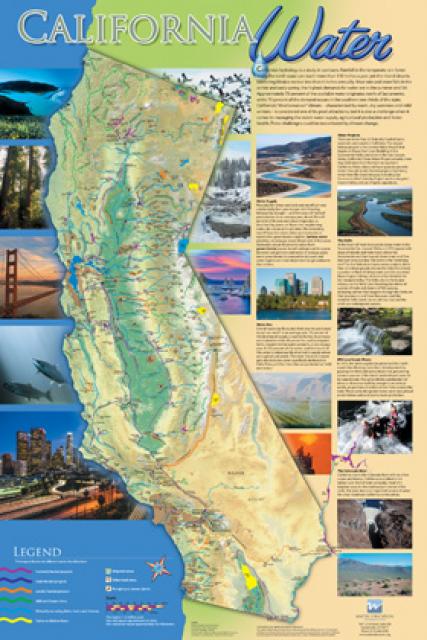Winter 2021 California Project WET Gazette
Volume XXVl, Issue I
Offline Activities for an Online World
“The work of education is divided between the teacher and the environment.”
― Maria Montessori
I don’t know what the virus situation will be by the time you read this article, but I do know it will be after we have said goodbye to an extremely trying year and flowed through time into another year bearing hope that the reign of microbial terror may finally be broken. Yet, until that hope is realized in full, the two great challenges remain — how to engage students through distance learning while also finding opportunities to reduce screen time.
Fall workshop participants made clear in evaluations they planned to use the Project WET activities they experienced during their online workshop and wanted more suggestions for to address these two challenges. The winter to early spring seasons provide multiple opportunities to explore the interdisciplinary world of water through observations out a window or physically seeking answers in the home landscape. Many Project WET activities set up these experiences and often include projects that can be done offline.
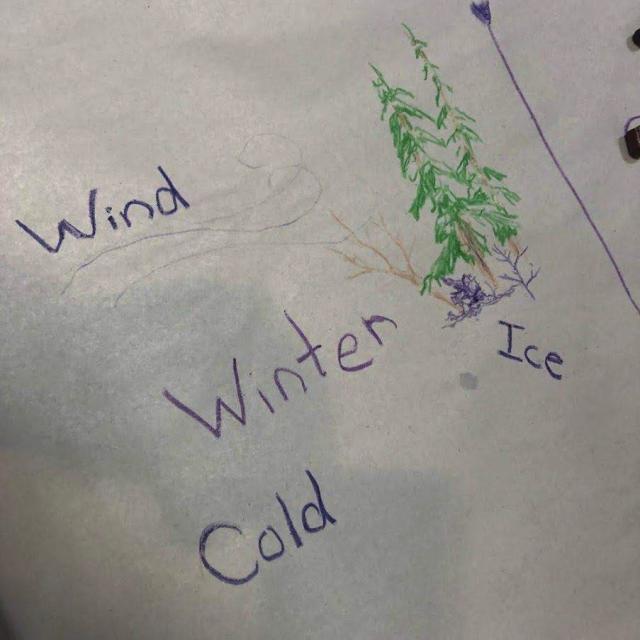 Exploring States of Matter. As noted in the fall Gazette, ‘A House of Seasons’ (Portal) is a lower elementary art activity that assesses student thoughts on weather, water and states of matter by season. The activity is often used to kick off school weather observation projects that have students not only learning to analyze and interpret the data they collect, but to also use that data to reflect back on their original perceptions of water in each season.
Exploring States of Matter. As noted in the fall Gazette, ‘A House of Seasons’ (Portal) is a lower elementary art activity that assesses student thoughts on weather, water and states of matter by season. The activity is often used to kick off school weather observation projects that have students not only learning to analyze and interpret the data they collect, but to also use that data to reflect back on their original perceptions of water in each season.
Pair ‘A House of Seasons’ with ‘Water Match’ (Portal). The Water Match’ Warm Up activity can be done as a live online class experience and uses materials that are common in most homes – an ice cube, a glass of water and a metal utensil or a cold window. The ‘Water Match’ card activity could be sent home as part of a home packet with a copy of the directions for parents and students to play.
To keep the focus of the ‘Water Match’ card activity on states of matter, replace Part 2 with the Extensions challenging players to explain how water moves from one form to another to create matches between states and having students create new state of matter cards to add to the game deck. Students can also be challenged to identify and record examples of water in different states as part of a weather observation project.
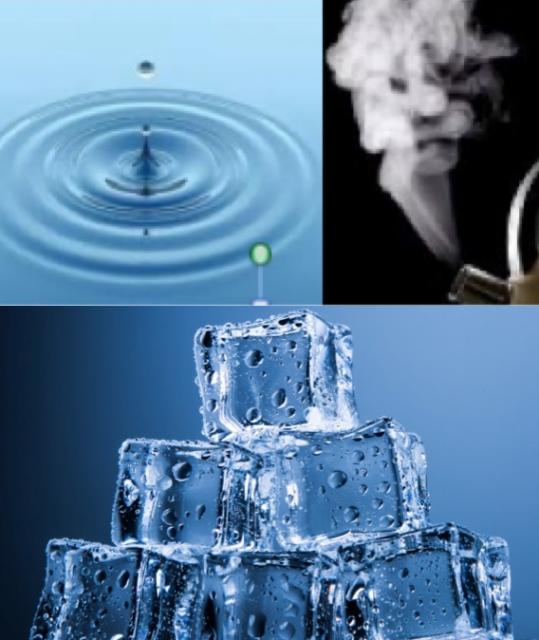 Molecules in Motion’ (p: 33) gets students out of their seats simulating how water molecules behave based on energy. The use of light or the hand signals described in the activity easily allows this activity to be done over Zoom. Screenshots can be used to capture different states of matter as students freeze in the center of their gallery view screens as ice crystals, flow side to side like liquid or wildly move about as vapor and used as part of the student diagrams describing what happens as water moves from one state to another.
Molecules in Motion’ (p: 33) gets students out of their seats simulating how water molecules behave based on energy. The use of light or the hand signals described in the activity easily allows this activity to be done over Zoom. Screenshots can be used to capture different states of matter as students freeze in the center of their gallery view screens as ice crystals, flow side to side like liquid or wildly move about as vapor and used as part of the student diagrams describing what happens as water moves from one state to another.
Water in the Home Landscape. Though less precipitation is predicted for most of the state this winter, more rain and snow are likely to fall before we reach April. As noted in the fall Gazette, the Project WET activity ‘Rainy Day Hike’ (p: 169) has students outside mapping how water flows across their home landscape. Maps can be as simple as sketches or a complex digital version with layers depending on the experience level of students.
I’ve broken the ‘Rainy Day Hike’ tasks in the activity into directions for 6 classroom teams to investigate 5 elements – but this could instead be up to 5 assignments, each adding another layer of detail to student maps and exploring the connections between each element. ‘Rainy Day Hike’ is a ‘two-fer’ as the next storm will have students going out to compare their map predictions to how the water actually flows and looking for evidence of what the water may have carried from their home landscape.
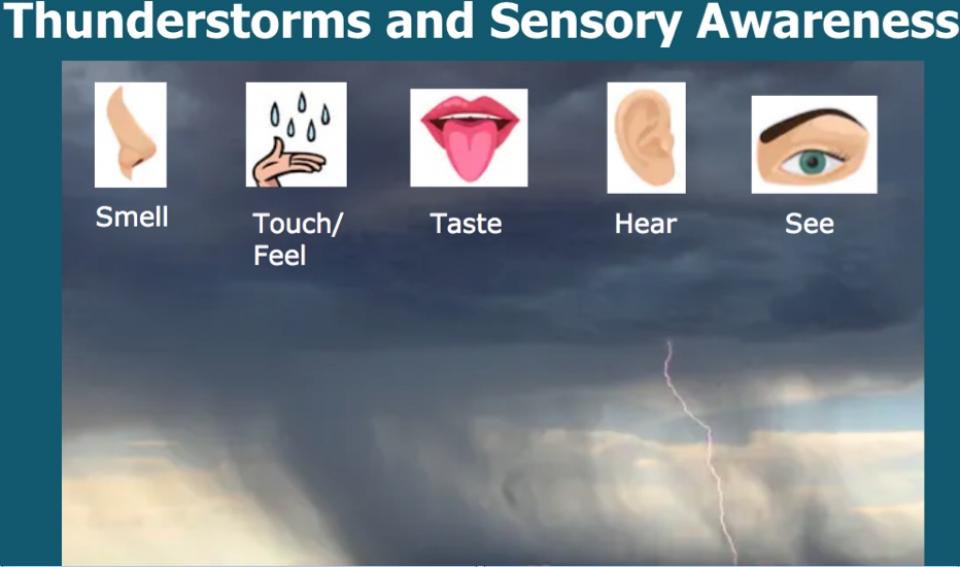 Educators have used the physical simulation of ‘The Thunderstorm’ (p: 209) in online classes this past fall to get kids out of their seats, but many are missing the opportunity to jump into Part 2 of the activity. Let your class know their simulation was successful, then share the mock class precipitation map used in a November workshop to introduce students to isohyet mapping. Have students make their own rain gauges and record the amount of precipitation in the next storm. Students can plot their data on a map of their area and map where most of the rain fell in the storm.
Educators have used the physical simulation of ‘The Thunderstorm’ (p: 209) in online classes this past fall to get kids out of their seats, but many are missing the opportunity to jump into Part 2 of the activity. Let your class know their simulation was successful, then share the mock class precipitation map used in a November workshop to introduce students to isohyet mapping. Have students make their own rain gauges and record the amount of precipitation in the next storm. Students can plot their data on a map of their area and map where most of the rain fell in the storm.
Those in snow country can do this too for the depth of snowfall, then use Part 2 ‘Snow and Tell’ (p: 389) to learn about, calculate and map the snow-water equivalent in their gauges. How do the snow depth maps compare to the snow-water equivalency maps? Student measurements can be compared to local precipitation data resources for the same storm and their precipitation measurements can be tied back to their ‘Rainy Day Hike’ maps. What are the connections between the precipitation measured and flow of water in their yards and the larger watershed?
The Watershed Connection. ‘Seeing Watersheds’ (p: 187) remains just as popular as a 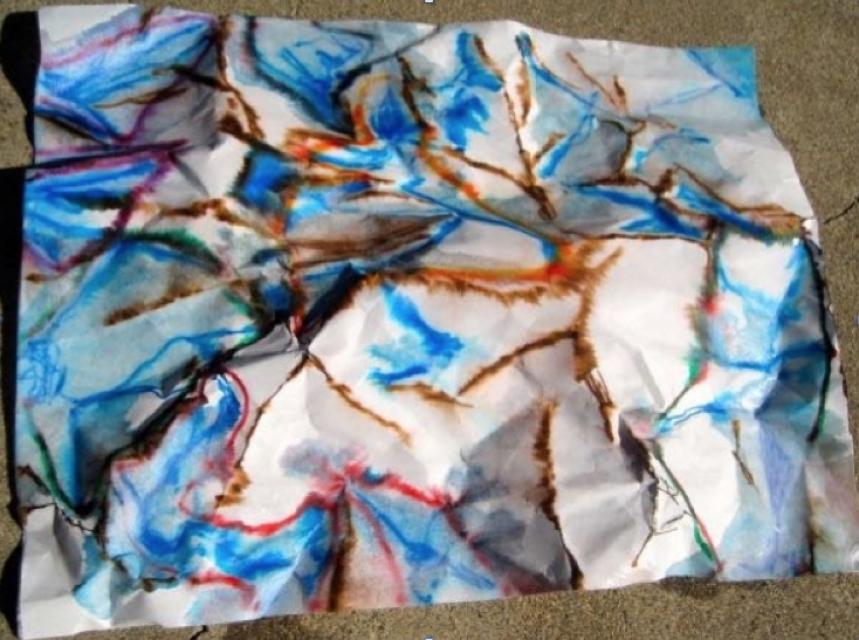 guided online activity as it had been pre-covid in class. Educators throughout the fall have reported using all parts of the activity to help younger students understand the concept of a watershed and to have older students identify their watershed and location within it. Why not extend this activity outside as well? After seeing how many watersheds can be outlined on their crumbled paper maps, have students do the same in their home landscape – and add this to their ‘Rainy Day Hike’ maps if using that activity. How many are open versus closed basins (i.e., puddles) once the rain stops?
guided online activity as it had been pre-covid in class. Educators throughout the fall have reported using all parts of the activity to help younger students understand the concept of a watershed and to have older students identify their watershed and location within it. Why not extend this activity outside as well? After seeing how many watersheds can be outlined on their crumbled paper maps, have students do the same in their home landscape – and add this to their ‘Rainy Day Hike’ maps if using that activity. How many are open versus closed basins (i.e., puddles) once the rain stops?
Tie into some of the engineering and additional properties of matter standards using the K-2 Option of ‘Rainy Day Hike,’ which has students engineering small boats from milk cartons, corks, walnut shells or other natural materials then following the flow of water around their home. Students can also look for evidence of water eroding areas of their home landscape and carrying sediments or pollutants to the local storm drain or waterway, then develop potential strategies for reducing or eliminating these problems around the home.
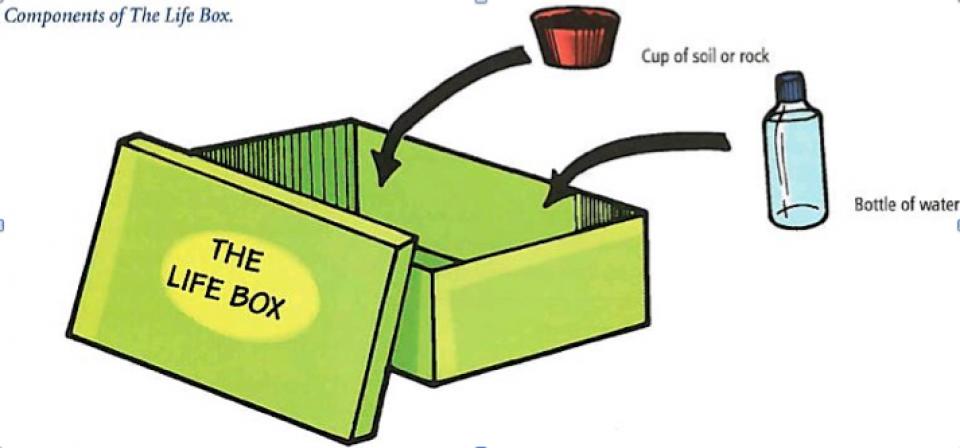 Water and the Return of Life. Green grass is already sprouting outside my window in response to our November rain and the renewal of life will kick into high gear as the angle and amount of sunlight grows throughout winter. ‘The Life Box’ (p: 69) could be led as a guided online class activity with students trying to guess the items in the box from afar or parents can be asked to create one – Mine are just match boxes with soil or potting soil and a small Dollar Tree wedding bubble vial filled with water inside, but pretty much any small container will do.
Water and the Return of Life. Green grass is already sprouting outside my window in response to our November rain and the renewal of life will kick into high gear as the angle and amount of sunlight grows throughout winter. ‘The Life Box’ (p: 69) could be led as a guided online class activity with students trying to guess the items in the box from afar or parents can be asked to create one – Mine are just match boxes with soil or potting soil and a small Dollar Tree wedding bubble vial filled with water inside, but pretty much any small container will do.
The activity can basically be done as written either at home or as a guided virtual activity, with students being tasked to identify examples of ‘living’ and ‘non-living’ things in the home landscape and directly observing how the living things are using the 4 factors identified in the life box. Students can also observe and record when they see different plants begin to sprout around their home and which factor may be the most important for this to happen. The activity Wrap-up can be replaced with the Extension of planting seeds to start a window, patio or yard garden for the spring.
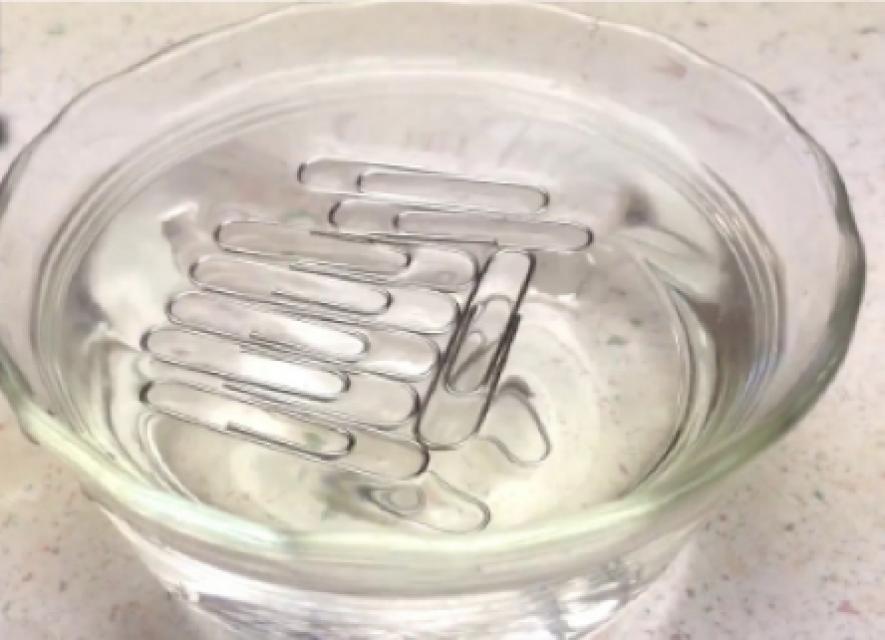 One final activity to note. I haven’t led a session of ‘H2Olympics’ (p: 13) in 16 years that hasn’t had students and teachers alike looking for ways around the instructions to boost their scores at the expense of others, while the rest of the class ends up demanding the activity directions be rewritten to reach more equitable results for all. So why not challenge students to do both – find the best methods for improving one’s odds on each activity, but only methods that can be replicated based on student directions to recreate their success will be declared the winners!
One final activity to note. I haven’t led a session of ‘H2Olympics’ (p: 13) in 16 years that hasn’t had students and teachers alike looking for ways around the instructions to boost their scores at the expense of others, while the rest of the class ends up demanding the activity directions be rewritten to reach more equitable results for all. So why not challenge students to do both – find the best methods for improving one’s odds on each activity, but only methods that can be replicated based on student directions to recreate their success will be declared the winners!
In addition to the Project WET activity suggestions above, the Websites of Interest include a variety of other activities and information to engage students and reduce screen time this winter. Take a look at the Winter Events and Professional Development Opportunities around the state in early 2021 and the variety of Student Opportunities and Grants, Scholarships & Awards to consider as you kick off a New Year.
Hope we all have a safe winter and things get brighter with the growing daylight as we move toward spring!
PROFESSIONAL DEVELOPMENT OPPORTUNITIES
California Project WET Workshops
The California Project WET program and our sponsors are eager to assist in supporting local professional development and water education outreach efforts. Our volunteer network of workshop facilitators has been hard at work designing and organizing workshops for the upcoming season, including workshops highlighting the role of water conservation, the interconnection of inland watersheds and the ocean, climate change and the use of Project WET to support teaching of other water science concepts and skills.
Join us in exploring integrative teaching practices, environmental literacy, environmental justice and restoration of coastal zone habitat areas by creating your personal GOH Spring Schedule. Choose as few or as many of our short courses as you would like. Our goal in every course is to provide participants with resources and strategies that can used right now, whether you are teaching through distance learning or in person and can help simplify while strengthening your teaching time.
Understanding Climate Change in California Workshops
These specialized workshops provide an opportunity for new and veteran Project WET educators to interact with California Department of Water Resources (DWR) Climate Change Scientists while learning about the basics of weather and climate science, how DWR and other state water managers at all levels are applying this science to safeguard California water resources – and how Project WET activities can help you integrate climate science concepts and skills back in the classroom.
Classroom Aquarium Education Program
The Classroom Aquarium Education Project is offered statewide in partnership with regional community organizations. While the program has several names around the state the core learning elements and student experiences are similar. These prerequisite training workshops are held at locations throughout the state. Completion of a training workshop is required to receive eggs. Teacher training workshops are offered at least once a year in each region.
California Education and the Environment Initiative (EEI)
The California Education and the Environment Initiative is a statewide effort to make environmental literacy an integral part of K-12 instruction in California. We provide educators with professional learning and instructional materials that demonstrate how to blend the environment into the teaching of traditional academic subjects like science, history, and English language arts. Click here to see a list of correlating Project WET activities to use with individual EEI units!
California Environmental Education Interagency Network
The California Environmental Education Interagency Network (CEEIN) is a state government consortium of environmental educators representing state departments and partner organizations. The CEEIN partnership maintains an online calendar, where educators can find valuable ways to increase their own knowledge and a variety of workshop experiences and participatory stewardship opportunities related to environmental education and environmental literacy offered by California agencies and their partnership network.
Forestry Institute for Teachers
Enjoy a week gaining a deeper understanding of forest ecosystems and human use of natural resources. Participants will receive a high-quality, interdisciplinary professional development experience focused on content and practices at the heart of current forest issues – as well as Common Core and Next Generation Science Standards. You’ll leave with a wealth of environmental education curriculum and a draft plan for integrating the experience back to the classroom. A $25 registration fee includes all housing, meals and materials throughout the week – and you’ll have an opportunity to receive credit and a $200 stipend.
WEBSITES OF INTEREST
California Project WET – Online Activity Support File
Throughout the fall, teachers requested copies of the presentations and resources used to lead Project WET activities online. This Google Drive file includes materials for use with Project WET activities including ‘The Incredible Journey’ (p: 155), ‘Water Inspirations’ (p: 535), ‘Raining Cats and Dogs’ (p: 521), ‘Poison Pump’ (p: 107), ‘A Grave Mistake’ (p: 315), ‘My Water Footprint’ (p: 441) and the California adaptation of ‘Discover the Waters of Our National Parks (p: 493). Please copy any of the resources you wish to use or modify for use in your program!
Nature Stewardship Through Science, Education, and Art
You can download John Muir Laws new book ‘How to Teach Nature Journaling’ for free! The curriculum includes great child-tested sketching activities, poetry writing and more detailed tips on teaching drawing in nature. These are great resources for teachers and parents to reduce student screen time while still fully immersing them in exercising science and communication arts skills. The site include how to videos such as ‘Making a Map’ that can be used with Project WET activities like ‘Rainy Day Hike’ (p: 169).
When we engage in citizen science, we make and share observations, analyze data, begin to formulate questions, experiment, and ultimately construct a deeper understanding about the world, all while advancing important areas of scientific research! We hope the projects and resources on this page – broken out by grade bands – help support parents, guardians, and formal and informal educators seeking at-home STEM resources.
Community Collaborative Rain, Hail and Snow Network
The Community Collaborative Rain, Hail and Snow Network (CoCoRaHS) is a nonprofit, community-based network of volunteers of all ages working together to measure and map precipitation. The only requirements to join are an enthusiasm for watching and reporting weather conditions and a desire to learn more about how weather can affect our lives. Wonderful program affiliated with SciStarter to integrate with the Project WET activity ‘TheThunderstorm.’
The Desert Research Institute is pioneering an exciting and unique approach to the science of snow by engaging community members as “citizen scientists” in real data collection and research throughout the Sierra Nevada. Equipped with a smartphone, a magnifier lens and freshly fallen snow, citizen scientist participants collect visual data by capturing stunning and revealing photographs of snow crystals – images that offer scientists a valuable glimpse into the operation of the region’s climate.
Meteorologist Crystal Wicker designed this website especially for kids to allow them to learn more about the fascinating world of weather. It’s also a wonderful educational website for teachers and parents to give them the right tools to explain the different types of weather to children. The website includes instructions for over 3 dozen simple weather-related experiments students can do at home or in the classroom:
My 1st graders are working on these fun boats now to go along with their explorer unit. Okay, I know they are not really explorer ships, but we can pretend, right? And they are so fun and cute. The kids love them! Click here to learn how to make a milk carton boat or boats made from corks, walnut shells or boats made from leaves, twigs or other natural materials.
Seasonal change is all around us. We see it in the length of a day, in the appearance of a flower, in the flight of a butterfly. Journey North engages students and citizen scientists around the globe in tracking wildlife migration and seasonal change. Participants share field observations across the northern hemisphere. Journey North provides an easy entry point to citizen science, with simple protocols, strong online support and immediate results.
Scientists alone cannot collect enough data: They need your help! Nature’s Notebook is an off-the-shelf program appropriate for scientists and non-scientists alike, engaging observers across the nation to collect phenology observations on both plants and animals. Join more than 15,000 other naturalists across the nation in taking the pulse of our planet. Nature’s Notebook is part of the USA National Phenology Project, bringing together citizen scientists, government agencies, non-profit groups, educators and students of all ages to monitor the impacts of climate change on plants and animals in the United States.
Contribute to Science! Every observation can contribute to biodiversity science, from the rarest butterfly to the most common backyard weed. One of the world’s most popular nature apps, iNaturalist helps you identify the plants and animals around you. We share your findings with scientific data repositories like the Global Biodiversity Information Facility to help scientists find and use your data. Get connected with a community of over a million scientists and naturalists who can help you learn more about nature. All you have to do is observe!
As one of the cornerstones of the U.S. Geological Survey’s National Geospatial Program, The National Map is an effort among the USGS and other Federal, State, and local partners to improve and deliver topographic information for the Nation. It has many uses ranging from recreation to scientific analysis to emergency response. It uses easy to navigate foundational base maps and makes it simple to download products such as the US Topo.
MapMaker Interactive is an online mapping tool that allows teachers and students to explore the world using map themes, data, and tools. Our online map makes it easy for students to visually explore and interact with our interconnected social and physical Earth systems.
Use this app for legal commercial and non-commercial purposes that don’t involve gambling. In other words, you can use it in your school classroom, for your company, in your non-profit organization, on your YouTube channel, etc. This website lets users share the wheels they have created with others. Educators have used this site to create customize spinners for ‘The Incredible Journey’ (p: 155), ‘Blue Planet’ (p: 130) and can be used for other activities involving probability.
Create a custom memory game for free using your own pictures, videos, events and links. Choose your own font, colors, and text size. The only limit is your imagination. It’s very simple and takes less than five minutes. When you’ve got your game looking just how you want it, where you want it, you can share a link right from the game page. I was only recently introduced to this website, but believe it can be used to recreate Project WET matching activities such as ‘Virtual Water’ (p: 289), ‘Water Match (Project WET Portal),’ ‘Water Concentration’ (Project WET Portal) or even ‘Raining Cats and Dogs’ (p: 521).
California Department of Water Resources: Education
We provide a variety of resources to K-12 educators – including parents – to encourage water education in and out of the classroom. Our free supplementary materials can be used to help learn about California’s diverse water resources. Additional resources including links to real-time data, online games, and local agency programs are also available on our website. Check out our ‘Water Wednesdays’ You Tube page for recording of our weekly conversations with DWR researchers on a range of water topics.
U.S. Geological Survey: Water Science School
Tap into over 140 years of USGS research in the natural sciences in the form of activities, maps, podcasts, online lectures, videos and more. Browse thousands of ideas for using these resources in elementary, secondary, university and informal education settings. Don’t forget to checkout the USGS Water Science School loaded with great material for use with multiple Project WET activities!
California Project WET Supplemental Materials Page
Remember to check this Water Education Foundation webpage to find California specific supplements and other materials for use with Project WET activities, including other activities tied to weather and climate such as the California version of ‘Discover the Waters of Our National Parks,’ ‘Snow and Tell’ or ‘Back to the Future.’
WINTER EVENTS
January 27 – 31, 2021: Snow Goose Festival of the Pacific Flyway
What we know the snow geese will arrive at their winter homes along the Pacific Flyway. What we don’t know is what Covid-19 will do this winter, so for the health and safety of all we have cancelled the Snow Goose Festival this year. Altacal Audubon will be looking into alternative ways to continue to celebrate the millions of waterfowl and thousands of raptors that call Northern Sacramento Valley their winter home, and we will keep you informed via our website We will miss seeing everyone in January, but we hope to see you again in 2022!
March 5 – 7, 2021: California Council for the Social Studies Conference
Today’s students only know a world that is interconnected with access to information on an unprecedented scale. The CCSS 2021 virtual conference – Cultivating Global Citizens for the 21st Century – will help educators develop a robust and relevant education in social studies, grounded in well developed historical, economic, geographic, civic and media literacy skills to help students successfully and responsibly navigate this world.
March 15 – 21, 2021: Fix a Leak Week
Are you ready to chase down leaks? Household leaks can waste nearly 1 trillion gallons of water annually nationwide, so each year we hunt down the drips during Fix a Leak Week. Mark your calendars for EPA’s annual Fix a Leak Week—but remember that you can find and fix leaks inside and outside your home to save valuable water and money all year long. Learn how to find and fix leaks during Fix a Leak Week. It’s as easy as 1-2-3.
March 22, 2021: World Water Day
We want to hear from you! World Water Day 2021, is about what water means to people, its true value and how we can better protect this vital resource. Tell us what water means to you. Your voice will help shape the forthcoming World Water Day campaign, leading up to March 22, 2021. And your conversations will inform a report about what water means to people around the world.
SCHOOL, CLASSROOM & TEACHER GRANTS
President’s Environmental Youth Award – Due: February 19, 2021
The President’s Environmental Youth Award (PEYA) recognizes outstanding environmental projects by K-12 youth, while promoting awareness of natural resources and positive community involvement. Since 1971, the President of the United States has joined with EPA to recognize young people for protecting our nation’s air, water, land and ecology. It is one of the most important ways the administration and EPA demonstrate commitment to environmental stewardship efforts created and conducted by our nation’s youth.
Presidential Innovation Award for Environmental Educators - Due: February 19, 2021
The PIAEE recognizes outstanding K-12 teachers who employ innovative approaches to environmental education and use the environment as a context for learning for their students. Teacher awardees receive up to $2,500 to be used to further the recipient’s professional development in environmental education and a Presidential award plaque. The teacher’s local education agency will also receive an award of up to $2,500 to fund environmental educational activities and programs.
Presidential Awards for Excellence in Mathematics and Science Teaching – Due: March 1, 2021
The Presidential Awards for Excellence in Mathematics and Science Teaching (PAEMST) are the nation’s highest honors for teachers of mathematics and science (including computer science). Awardees serve as models for their colleagues, inspiration to their communities, and leaders in the improvement of science and mathematics education. This year’s awards will honor science, technology, engineering, mathematics, and/or computer science teachers working in grades 7-12.
STUDENT CONTESTS
Purple Plow Challenge: H2O Grow Contest – Begins: January 4, 2021
Food security is a problem around the world and at home. Students participating in this challenge will design, build and utilize a functioning aquaponics system that can be used in their unique location or situation to help maximize the availability and access of food given the extensive growth in population and limitations of space. Get creative as you design a sustainable living environment for aquatic life while growing food in this season’s Purple Plow Challenge!
Caring for Our Watersheds Contest - Due: January 29, 2021
The Caring for Our Watersheds writing contest challenges students to research their local watershed, identify an environmental concern and come up with a realistic solution. The California contest is open to all 9th-12th grade students who live in Yolo, Solano, Sacramento, Colusa, Yuba, Sutter, Glenn, El Dorado, Placer, and San Joaquin counties. Contact Beth Del Real at (530) 795-1544.
California Coastal Art & Poetry Contest – Due: January 31, 2021
The California Coastal Commission invites California students in K-12th grade to submit artwork or poetry with a California coastal or marine theme. By encouraging youth to reflect on the beauty and spirit of California’s beaches and ocean, we hope to inspire a greater sense of stewardship for these natural places. Art and poetry must have a California coastal or marine theme to be eligible and include a short statement on how the coast or ocean inspired your creation.
H2O Classroom Challenge – Register by: January 31, 2021
Cal Water H2O Classroom Challenge is a project-based, environmentally focused competition for grades 4-6 and aligned with Common Core and complementary to Next Generation Science Standards. Students of participating classrooms initiate, develop and implement a 4-8 week-long project focusing on caring for water. Join the competition! California classrooms and school-based clubs – grades 4-6 – in a Cal Water Service area can participate.
NPR Student Podcast Challenge – Due: February 15, 2021
We’re inviting college students around the country to create a podcast and compete for a chance to have your work appear on NPR. Create a podcast with your friends, your club, or by yourself and submit it to us. This contest is for students pursuing an associate’s or bachelor’s degree. There is no age restriction! Each podcast should be between three and eight minutes long. The winning podcast submissions will be featured in segments on NPR’s Morning Edition or All Things Considered
World of 7 Billion Video Contest – Due: February 25, 2021
Population Education invites any middle or high school student (grade 6-12, or the international equivalent) to create a short video – up to 60 seconds – about human population growth that highlights one of the following global challenges: Sustaining Water Systems, Ensuring Economic Opportunities, Improving Climate Resiliency. Students may be located anywhere in the world and entry into the contest is free.
California Recycling Challenge – Register by: March 1, 2021
The statewide K-12 Recycling Challenge has been held annually with great enthusiasm to promote and encourage recycling. The competition between schools and recycling coordinators resulted in over 7.7 million pounds of recyclables collected in the past five years. For 2021, we will not conduct the in-school recycling competition but the Challenge includes three new for 2021 components!
My California Mapping Competition – Due: March 12, 2021
The “My California GIS Mapping Showcase and Competition” will be continuing in 2020-21, the 5th running of this annual event. This exciting statewide opportunity encourages middle (4th-8th grade) and high school (9th-12th grade) students to harness the power of Geographic Information Systems and get connected with their state by producing an online map that focuses on stories, issues or ideas that are important to them.
Stockholm Junior Water Prize – Applications Due: April 15, 2021
The Stockholm Junior Water Prize competition is the world’s most prestigious water-science competition for students. The purpose of the SJWP program is to increase students’ interest in water-related issues and research and to raise awareness about global water challenges. The winner of the California competition will advance to the national level, and the winner of that event will represent America at the global competition in Sweden.
CREDITS
California Project WET Gazette is published by the Water Education Foundation, which serves as the state coordinator and host institution for Project WET USA, a program of the Project WET Foundation
This material is based upon work supported by the U.S. Geological Survey under Grant/Cooperative Agreement No. G18AC00208. The views and conclusions contained in this document are those of the authors and should not be interpreted as representing the opinions or policies of the U.S. Geological Survey. Mention of trade names or commercial products does not constitute their endorsement by the U.S. Geological Survey.
Editor: Brian Brown, California Project WET Coordinator
Email me here with questions or recommendations for the Gazette!
Water Education Foundation
1401 21st Street, Suite 200
Sacramento, CA 95811
916.444.6240
www.watereducation.org










